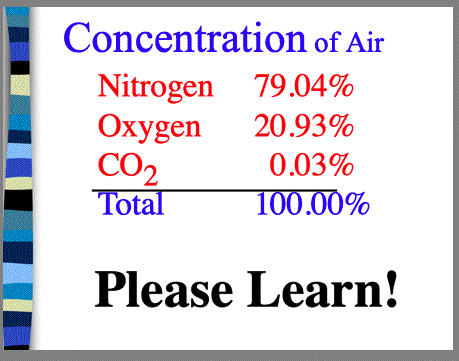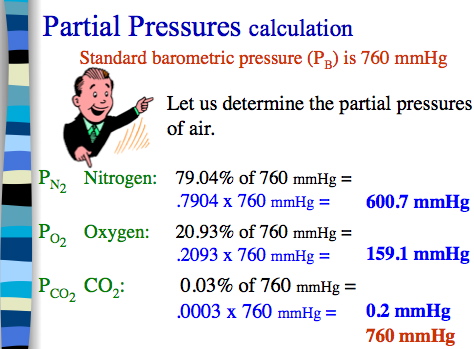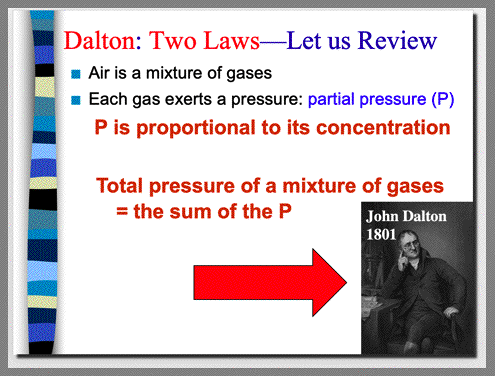|
|
Ex Phys Home 
|
|
|
| Inspiration: Active Process |
|
Expiration: Passive Process |
| External intercostal muscles contract, (expanding rib cage) |
|
External intercostal muscles relax, (reducing rib cage) |
| Diaphragm contracts (expanding the thoracic cavity) |
|
Diaphragm relaxes (reducing the thoracic cavity) |
| Volume Increases |
|
Volume Decreases |
| Pressure Decreases |
|
Pressure Increases |
| AIR FLOWS INTO THE LUNGS |
|
AIR FLOWS OUT OF LUNGS |
|
|
|
 |
| Class, please memorize these concentrations of air. |
 |
 |
| Note: To calculate a partical pressure you must first convert the percent to a decimal number. To remove the percent you divide by 100 or simply move the decimal two places to the left. For instance, 0.03% converted to a decimal = .0003. After you have converted the percent to a decimal you can caculate the partial pressure. Class, for credit on the exam you must set up the equation as shown above. |
 |
| Class, please learn the Two Laws of John Dalton |
 |
 |
|
|
|
|
|
|
|


